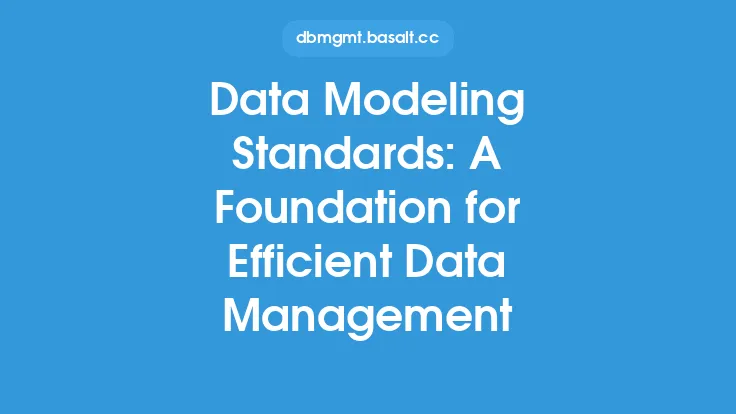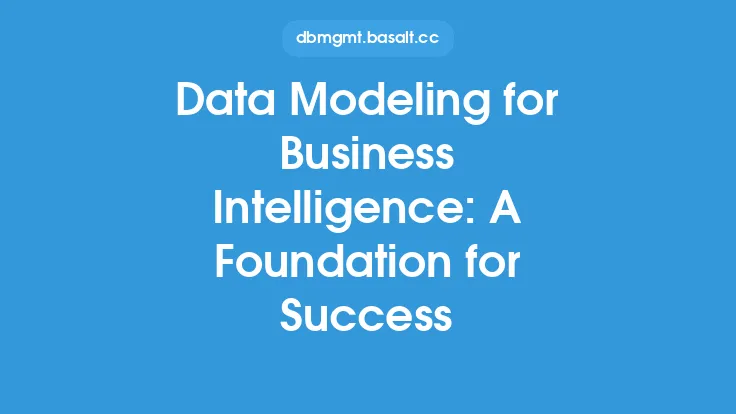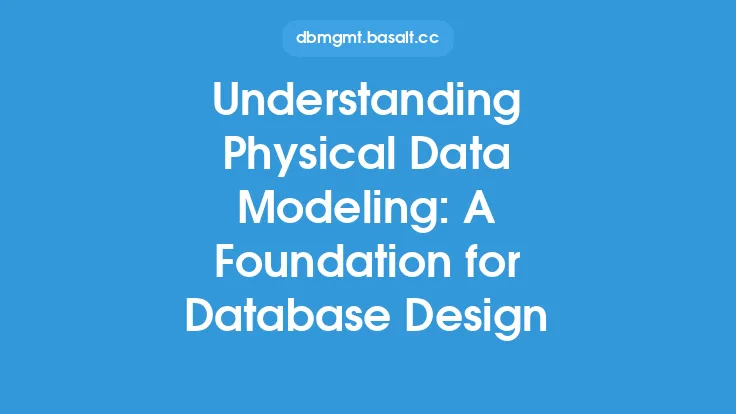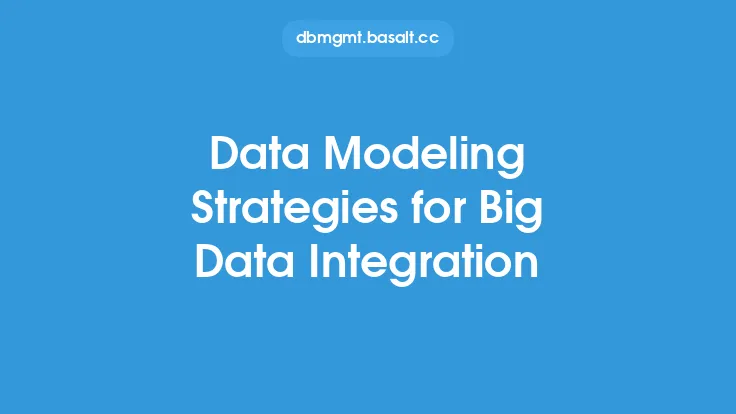In the realm of data management, the foundation of a successful data integration strategy lies in the effective use of conceptual data modeling. This crucial step in the data modeling process involves creating a high-level representation of the data entities, relationships, and rules that govern the data, without worrying about the physical implementation details. By focusing on the conceptual aspects of data modeling, organizations can establish a solid foundation for their data integration efforts, ensuring that their data is consistent, accurate, and easily accessible.
Introduction to Conceptual Data Modeling
Conceptual data modeling is a technique used to create a abstract representation of the data, focusing on the business requirements and the meaning of the data. It involves identifying the key entities, attributes, and relationships that are relevant to the business, and representing them in a way that is easy to understand and communicate. The goal of conceptual data modeling is to create a model that is independent of any specific technology or implementation, and that can be used as a foundation for further development and integration.
The Benefits of Conceptual Data Modeling
The benefits of conceptual data modeling are numerous, and can have a significant impact on the success of data integration efforts. By creating a clear and concise representation of the data, organizations can ensure that all stakeholders have a common understanding of the data and its meaning. This can help to reduce errors and inconsistencies, and improve the overall quality of the data. Additionally, conceptual data modeling can help to identify gaps and inconsistencies in the data, and provide a framework for addressing these issues.
Key Concepts in Conceptual Data Modeling
There are several key concepts that are essential to understanding conceptual data modeling. These include entities, attributes, relationships, and rules. Entities are the objects or concepts that are being modeled, such as customers, orders, or products. Attributes are the characteristics or properties of these entities, such as name, address, or price. Relationships are the connections between entities, such as a customer placing an order. Rules are the constraints or regulations that govern the data, such as a customer must have a unique identifier.
Entity-Relationship Modeling
Entity-relationship modeling is a fundamental technique used in conceptual data modeling. It involves representing the entities, attributes, and relationships as a diagram, using a set of standard symbols and notations. The entity-relationship model is a powerful tool for communicating the structure and meaning of the data, and can be used to identify areas of complexity and potential issues.
Conceptual Data Modeling Techniques
There are several techniques that can be used to create a conceptual data model. These include entity-relationship modeling, object-role modeling, and dimensional modeling. Each of these techniques has its own strengths and weaknesses, and the choice of technique will depend on the specific requirements of the project. Entity-relationship modeling is a popular choice for conceptual data modeling, as it provides a clear and concise representation of the data.
Data Normalization
Data normalization is an important aspect of conceptual data modeling. It involves organizing the data into a set of related tables, each with a unique set of attributes. The goal of data normalization is to eliminate data redundancy and improve data integrity, by ensuring that each piece of data is stored in one place and one place only. There are several levels of normalization, each with its own set of rules and constraints.
Conceptual Data Modeling Tools
There are several tools available that can be used to create and manage conceptual data models. These include data modeling software, such as Entity-Relationship Diagram (ERD) tools, and data governance platforms. These tools provide a range of features and functionality, including data modeling, data governance, and data quality management.
Best Practices for Conceptual Data Modeling
There are several best practices that can be followed to ensure the success of conceptual data modeling efforts. These include involving all stakeholders in the modeling process, using a consistent and standardized approach, and focusing on the business requirements and meaning of the data. Additionally, it is essential to ensure that the model is flexible and adaptable, and can evolve over time as the business requirements change.
Common Challenges in Conceptual Data Modeling
There are several common challenges that can arise when creating a conceptual data model. These include ensuring that the model is accurate and complete, managing the complexity of the data, and ensuring that all stakeholders have a common understanding of the data. Additionally, it can be challenging to balance the need for simplicity and clarity with the need for detail and precision.
Conclusion
In conclusion, conceptual data modeling is a critical step in the data modeling process, and provides a foundation for successful data integration efforts. By creating a clear and concise representation of the data, organizations can ensure that all stakeholders have a common understanding of the data and its meaning. The benefits of conceptual data modeling are numerous, and can have a significant impact on the success of data integration efforts. By following best practices and using the right tools and techniques, organizations can create a conceptual data model that is accurate, complete, and adaptable, and that provides a solid foundation for their data integration efforts.





